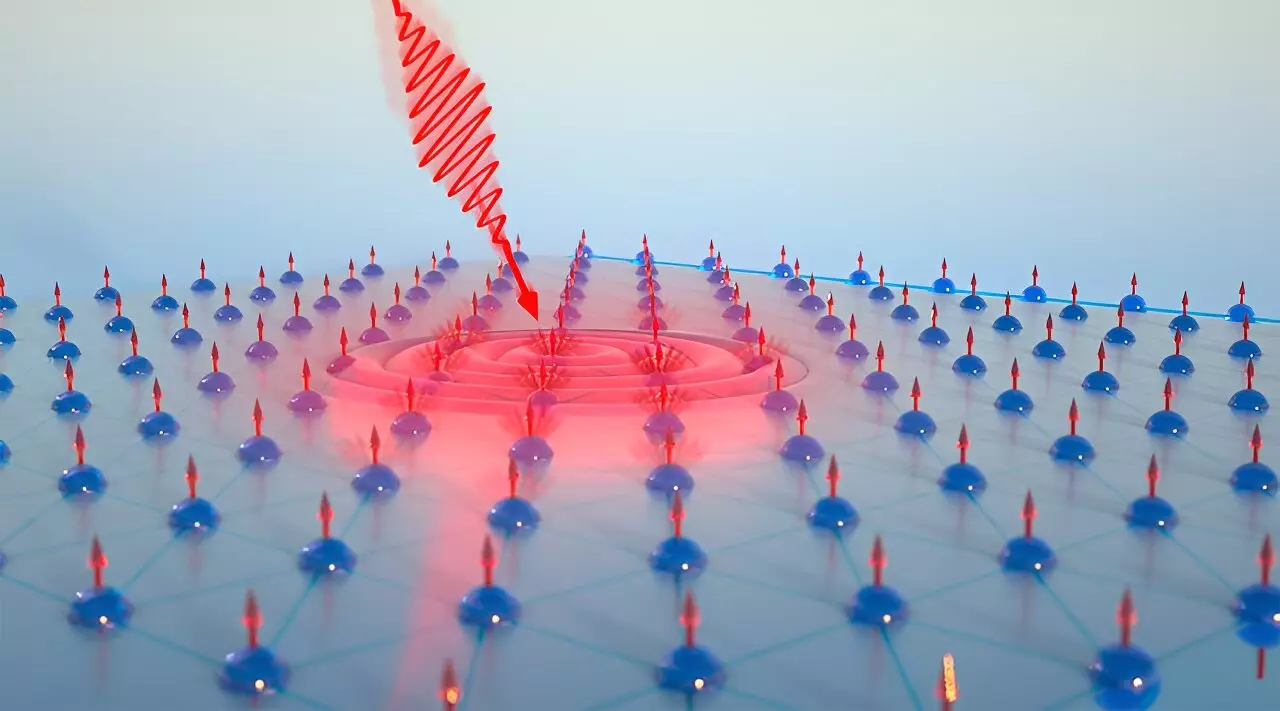Recent advancements in materials science have unveiled exciting possibilities for optical data storage, especially through the research conducted at the University of Chicago’s Pritzker School of Molecular Engineering (PME). The spotlight is on a unique material, manganese bismuth telluride (MnBi2Te4), which has shown unprecedented properties that may revolutionize how data is stored and accessed. Researchers have discovered that this compound can rapidly modify its magnetic states in response to light, enabling the potential to encode information in ways not previously imagined. This research could signal a paradigm shift in the realms of computational data storage and energy efficiency.
Unexpected Findings in Material Properties
The journey began with an inquiry into the fundamental aspects of MnBi2Te4, aimed at comprehensively understanding its molecular characteristics. However, the researchers quickly found themselves on a path of unexpected discoveries that reveal how swiftly the material’s magnetic properties respond to laser light. Assistant Professor Shuolong Yang, the study’s senior author, emphasized the importance of fundamental research in yielding practical applications for engineering. The initial goal of understanding why the anticipated topological properties of MnBi2Te4 were elusive has led to promising revelations that highlight this material’s significant technological potential.
One of the key findings documented in their paper published in *Science Advances* involves the competition between two distinct electron states within MnBi2Te4. On one side exists a topological state, advantageous for quantum information encoding, and on the other is a light-sensitive state that could be harnessed for optical storage applications. Despite previous studies underscoring MnBi2Te4’s potential as a magnetic topological insulator (MTI), achieving practical results has proven challenging. The dual functionality of this material underscores a complex interplay that can be better understood through advanced observational techniques.
To interrogate the behavior of electrons in MnBi2Te4, Yang’s research group employed innovative spectroscopy methods that enabled real-time observations of electron dynamics on ultrafast time scales. By harnessing both time- and angle-resolved photoemission spectroscopy and collaborating with experts in magneto-optical techniques, they unlocked valuable insights into how light interacts with this material at a fundamental level. The results revealed an unusual quasi-2D electron state competing with the anticipated topological behavior, acting contrary to previous expectations.
What emerged from these findings, however, was that the competing quasi-2D state actually possesses properties beneficial for data storage, despite its incompatibility with quantum applications. The strong coupling between this state and external light opens the door to the development of an optical memory system—one that could dramatically outperform current electronic memory devices in terms of energy efficiency. This insight has led researchers to propose further experiments aimed at manipulating MnBi2Te4’s properties with lasers—a promising avenue that could significantly enhance data processing capabilities.
Understanding the delicate balance between the competing electron states in MnBi2Te4 holds immense promise for both classical and quantum computing applications. Not only does it present a pathway toward efficient optical memory solutions, but it also lays the groundwork for optimizing the material’s intrinsic properties as a magnetic topological insulator. As ongoing experiments continue to refine our understanding of this material, researchers may be able to harness its complex behavior to create next-generation quantum data storage systems, merging the worlds of classical and quantum information processing.
The advances in understanding MnBi2Te4 underscore a critical intersection of fundamental science and potential engineering applications. As researchers like Shuolong Yang dive deeper into the heterogeneity of the electronic states present in this material, the possibility of developing revolutionary data storage solutions is becoming increasingly tangible. This exploration not only exemplifies the unexpected nature of scientific discovery but also reaffirms the importance of continued investment in fundamental research to pave the way for future technological innovations. The horizon is bright for MnBi2Te4, marking a new chapter in the story of data storage.

